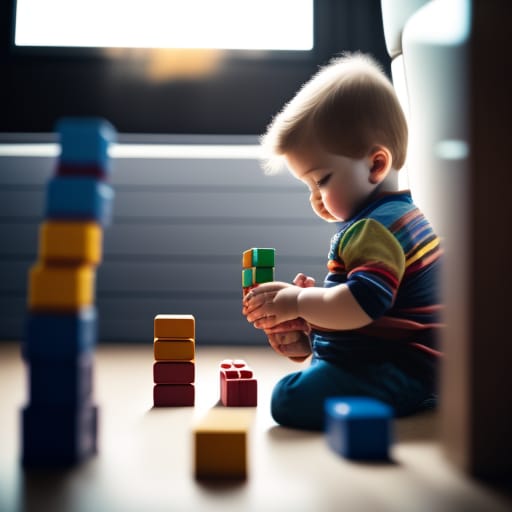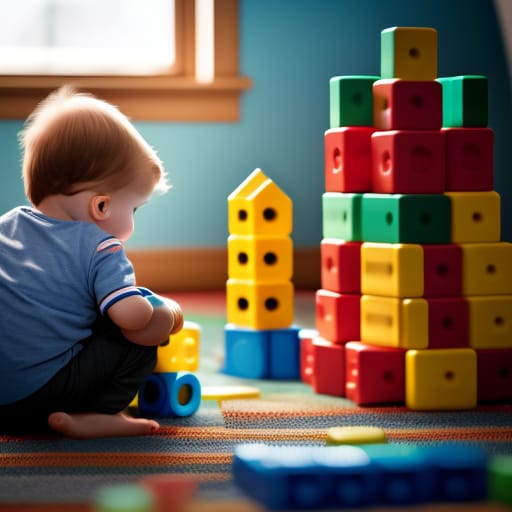Duplo blocks are a classic toy that has been delighting children for decades. If your child or grandchild is just getting started with building blocks, Duplo is a perfect first choice. Read on to learn all about the benefits of Duplo blocks, the different types available, tips for using them, and how they can aid development.

A Brief History of Duplo Blocks
Duplo blocks have been around since 1969 when they were first produced by the LEGO Group in Denmark. The name Duplo comes from the Latin word “duplex” meaning double, referring to the blocks being twice the size of standard LEGO bricks.
Duplo blocks were designed for preschool-aged children, ages 1.5-5 years old. Their larger size prevents smaller pieces from being a choking hazard, making them a safer choice for younger kids. The studs on Duplo blocks are also bigger and farther apart, which makes them easier for small hands to grasp and connect.
Over the past 50+ years, Duplo has become one of the most iconic preschool toys. They provide the perfect introduction to LEGO bricks as kids get older. Duplo blocks allow young children to experience the creativity and joy of building with LEGO before progressing to the classic smaller bricks.
Why Are Duplo Blocks Beneficial for Kids?
There are many developmental benefits associated with playing with Duplo blocks:
Enhances Creativity and Imagination
Building with Duplo blocks allows kids to build whatever they can imagine. From simple structures like towers and bridges to elaborate castles, planes, and even entire cities, the possibilities are endless. Duplo blocks provide an open-ended toy that enables creativity and innovative thinking.
Develops Fine Motor Skills
Connecting the Duplo blocks requires grasping, turning, and maneuvering the blocks, which helps strengthen little hands. The motion involved in taking blocks apart and putting them back together also aids fine motor development.
Improves Problem-Solving and Critical Thinking
As kids work to build taller towers or more complex structures, they start developing early engineering and problem-solving skills. Duplo blocks allow children to bring their designs to life and then identify what is working versus what needs rethinking.
Enhances Social and Emotional Development
Collaborating on shared structures encourages communication, cooperation, sharing, and teamwork. Kids also develop language skills as they describe and discuss their building process. Completing a creation from start to finish additionally promotes a sense of accomplishment.

Types of Duplo Blocks
There are a wide variety of Duplo blocks available to spark kids’ creativity:
Basic Duplo Blocks
These standard rectangular and square blocks in a variety of colors allow for all kinds of constructions. From 2×2 blocks to longer rectangles, triangles, and circles, kids can build elaborate structures.
Themed Duplo Blocks
Duplo makes themed sets featuring colorful blocks with specialty pieces like arches, doors, windows, and characters. Popular themes include trains, planes, houses, castles, vehicles, animals, and more.
Duplo Building Block Sets
For kids who already have a collection of basic Duplo blocks, larger building sets provide even more pieces and accessories to create specific structures. Sets include instructions for building items like fire trucks, helicopters, and houses.
Using Duplo Blocks: Tips and Tricks
Here are some top tips for getting the most out of Duplo blocks:
- Start with a sturdy, flat base. The best foundations are made from larger rectangle blocks.
- Build vertically rather than out to avoid collapse. Taller narrower structures are more stable.
- Use triangle and circle blocks decoratively rather than in load-bearing walls.
- Attach wheels to vehicles carefully. Make sure axles are straight and wheels can spin freely.
- Combine sets together or add random blocks to allow more creative, unstructured building.
- Store smaller pieces like windows, doors, and characters in a separate container so they don’t get lost.
- Sort blocks by color when cleaning up to make next time faster to start building.
- Take creations apart from the top down rather than smashing them to help develop controlled motor skills.

Duplo Blocks for Speech and Language Development
In addition to enhancing motor and problem-solving abilities, Duplo blocks also provide opportunities to improve speech and language skills. Here are some of the ways they can help with communication development:
Supports Speech Sounds
Naming pieces, colors, and naming creations helps expand vocabulary and practice producing speech sounds. Kids learn new words like “tower,” “bridge,” “airplane,” etc.
Provides Language-Rich Interactions
Children use language to direct building collaborations, describe what they are working on, and engage in imaginative play scenarios. Rich conversations facilitate language use.
Inspires Storytelling
With an endless variety of structures, kids make up stories about the buildings and the people or animals that live there. Creating narratives provides language practice.
Can Be Used in Speech Therapy
For kids working on articulation, vocabulary, or language goals, a speech-language pathologist can incorporate Duplo structures into therapy activities. Building and describing creations offer opportunities to target speech/language treatment goals during motivating play.
The Best Duplo Sets for Toddlers and Preschoolers
Here are some top-rated Duplo sets to consider for younger builders just starting with blocks:
Basic Brick Set
- 80 colorful blocks
- Windows, doors, wheels, eyes, wedges
- $24.99 MSRP
Animals Set
- 10 animals like lion, elephant, crocodile
- Kid-friendly 2+ age range
- $19.99 MSRP
Farm Building Set
- Barn, silo, farm vehicles, animals, farmer figurines
- Develops motor skills
- $39.99 MSRP
Simple Train Set
- Engine and two cars with wheels, eyes
- Tracks and train station
- $29.99 MSRP
Conclusion
Duplo building blocks provide toddlers and preschoolers with an engaging open-ended toy that enhances creativity and developmental skills. Their larger size and colorful themes make Duplo blocks ideal for introducing little ones to the fun of building.
As kids gain fine motor control and grow language and problem-solving abilities, Duplo blocks provide the perfect scaffold for eventually playing with LEGOs. With a quality set of Duplo blocks, children can embark on countless imaginary adventures and build memories that will last a lifetime!
What are your favorite Duplo sets and memories from childhood? Share your experiences with these classic building blocks in the comments!
Frequently Asked Questions
What is the best age for Duplo blocks?
Duplo blocks are suitable for children ages 1.5 to 5 years old. They are an ideal first building block for toddlers and preschoolers to develop fine motor skills and creativity.
How are Duplo blocks different from LEGO blocks?
The main difference is their size. Duplo blocks are twice the size of standard LEGOs. Their larger shape makes them safer and easier for younger kids to handle and connect. Duplo blocks also have bigger studs that are farther apart.
Are Duplo blocks compatible with LEGO?
Yes! A great feature of Duplo blocks is that they can interlock with LEGO bricks. So as your child gets older, Duplo creations can be combined with LEGOs. The transition from Duplo to LEGO is seamless.
Where can I buy Duplo blocks?
Popular retailers that sell Duplo blocks include Amazon, Walmart, Target, LEGO stores Discovery Centers, and Toys R Us. Many preschools, daycares, and therapists also use Duplo blocks in their classrooms.
What are the best starter Duplo sets?
Recommended first Duplo sets include:
- Basic Brick Set
- Animals or Farm Sets
- Simple Vehicles like Trains or Trucks
- Small Building Sets like Houses or Garages
Start with around 50-80 colorful blocks so there’s plenty for open-ended building. Then add specialty-themed sets for more fun down the road!